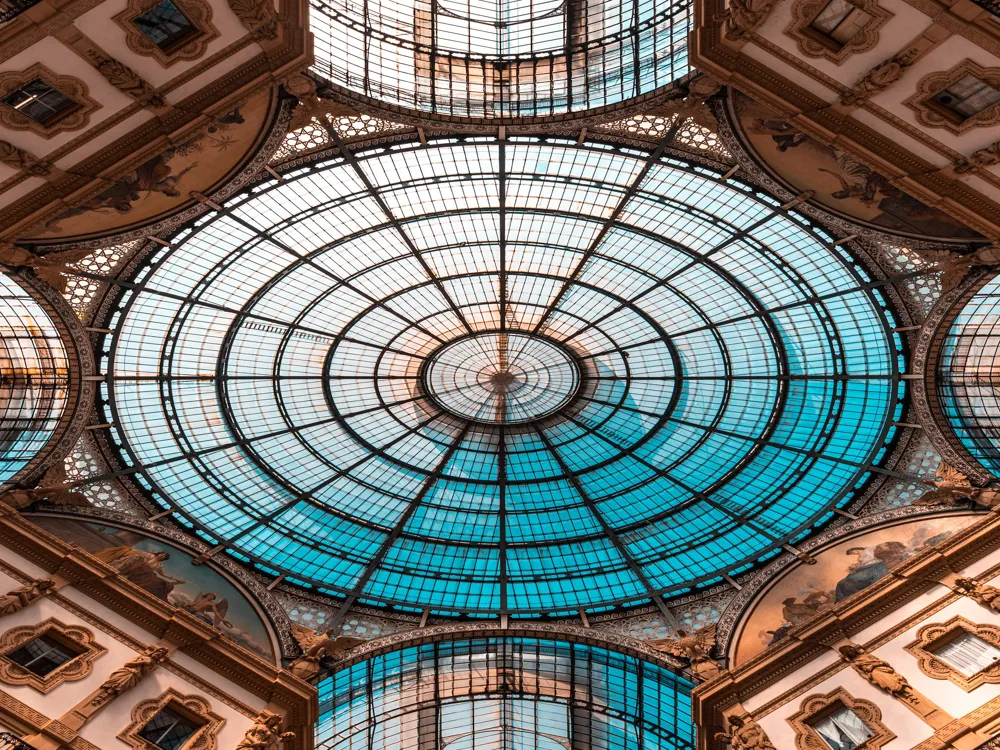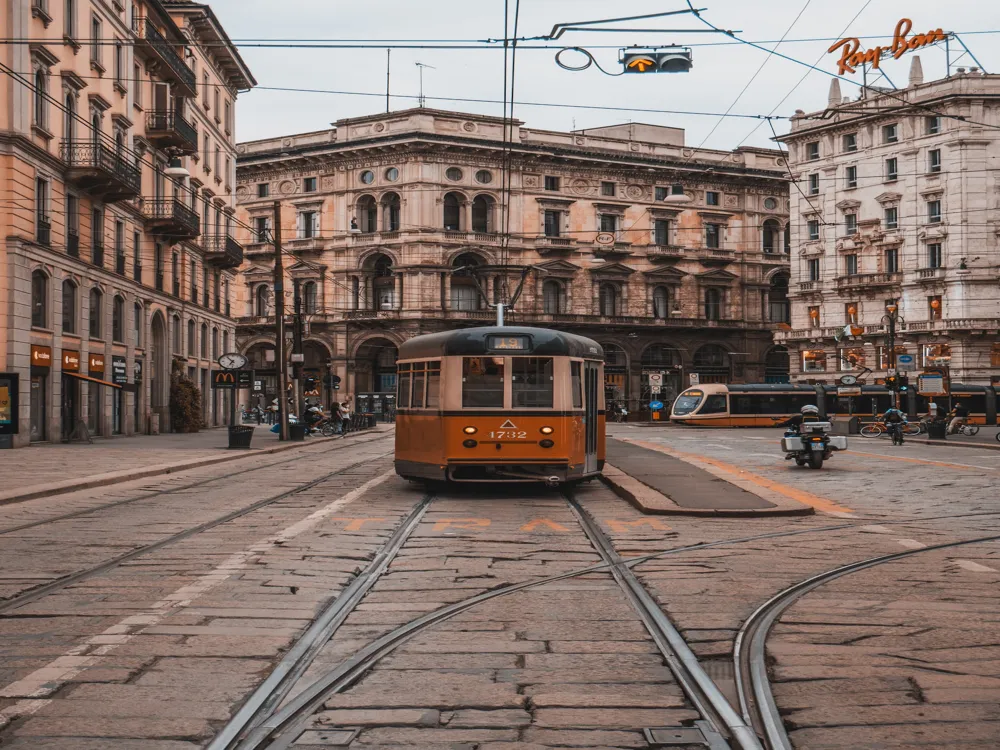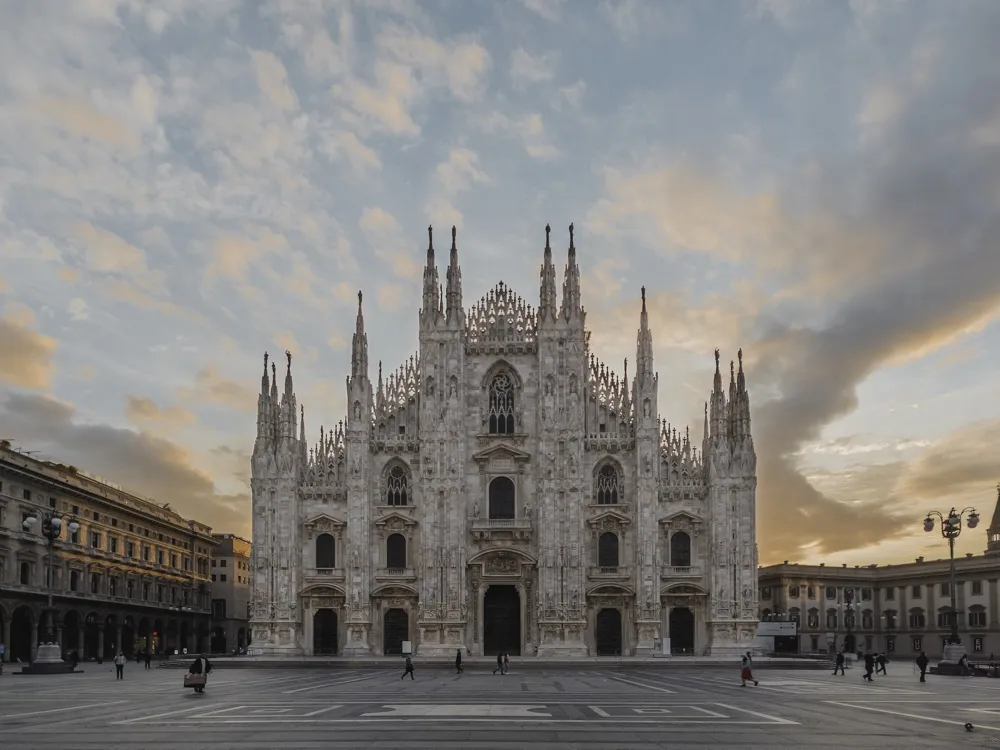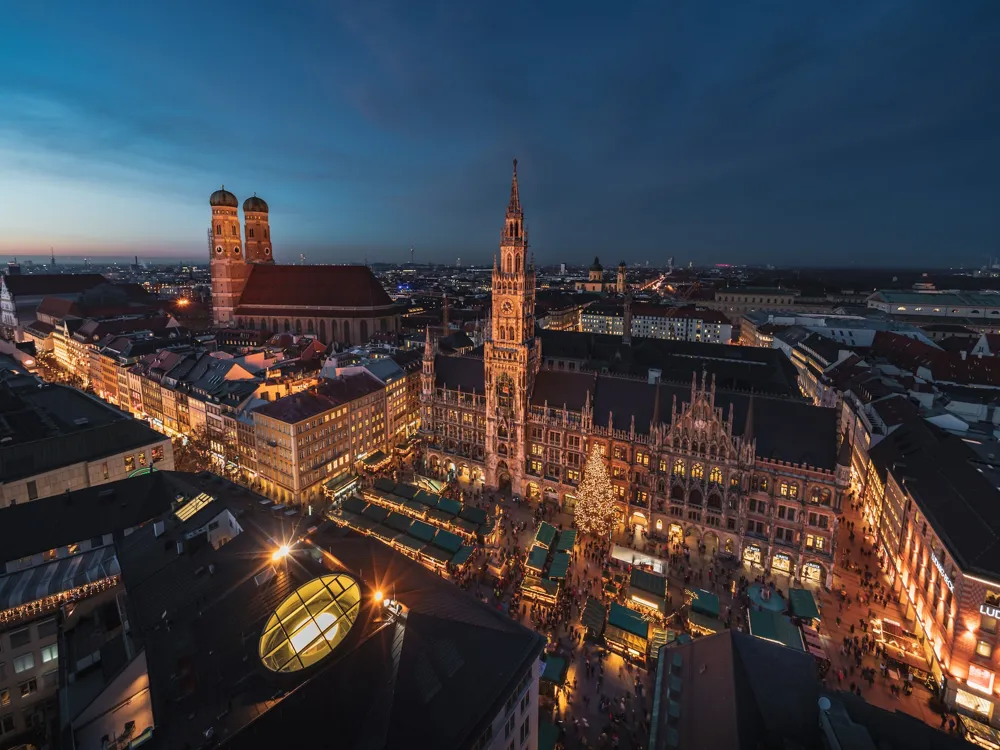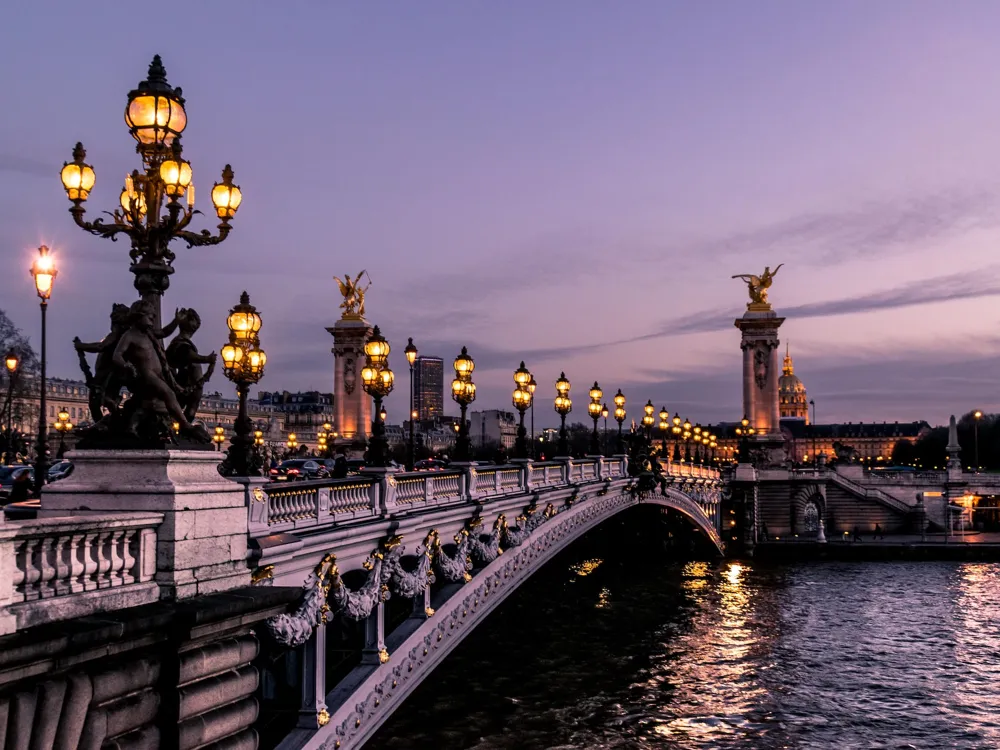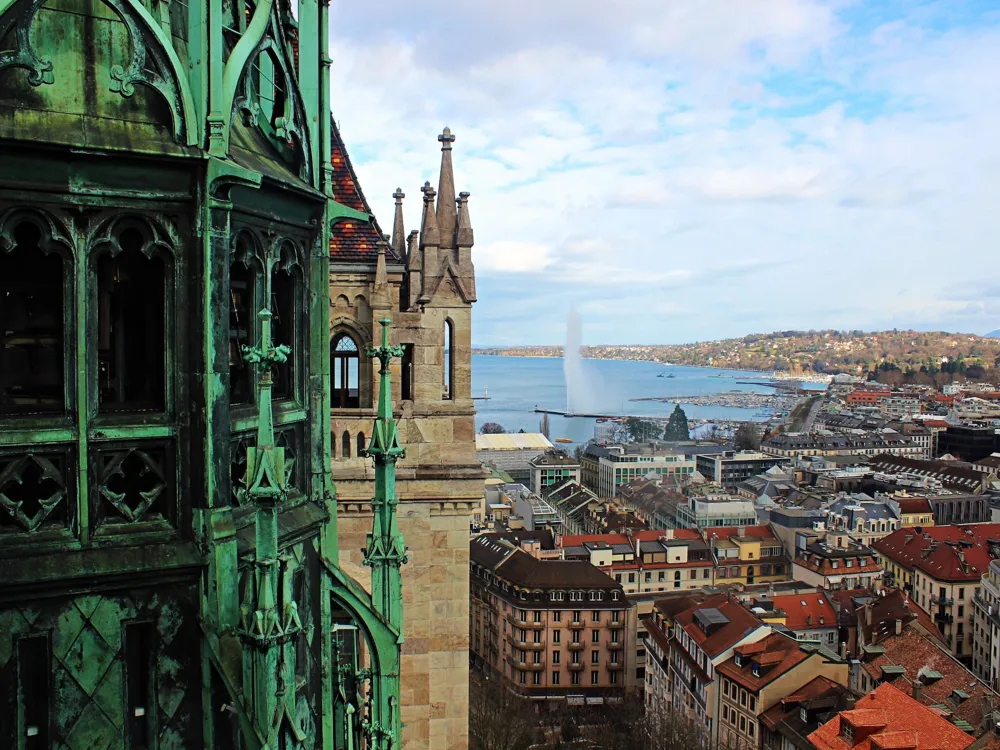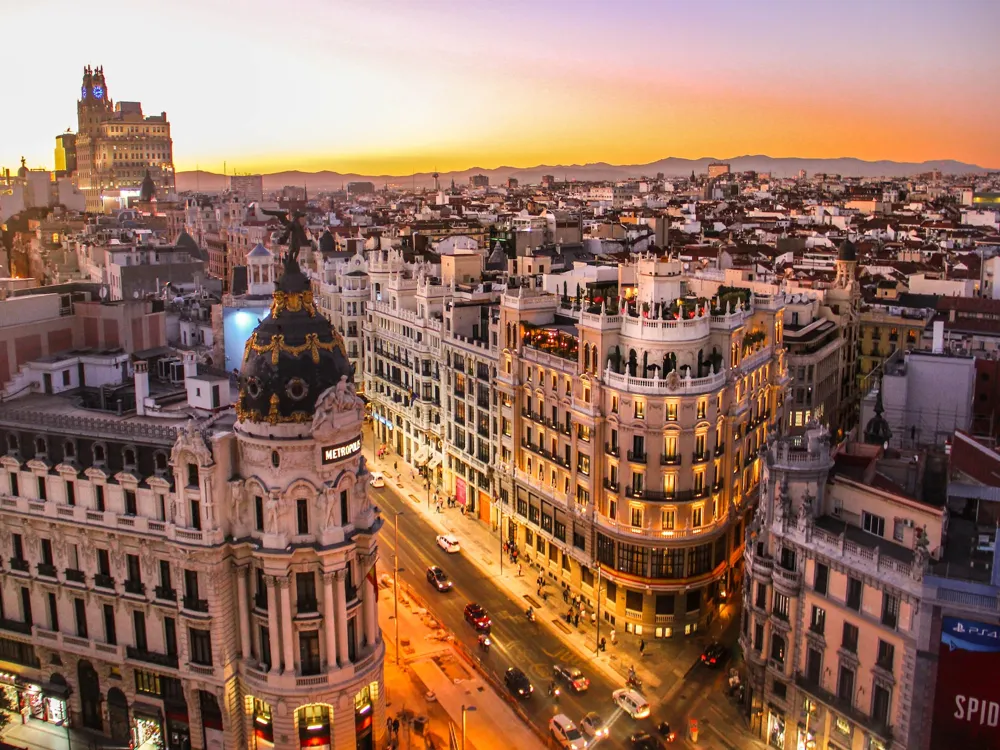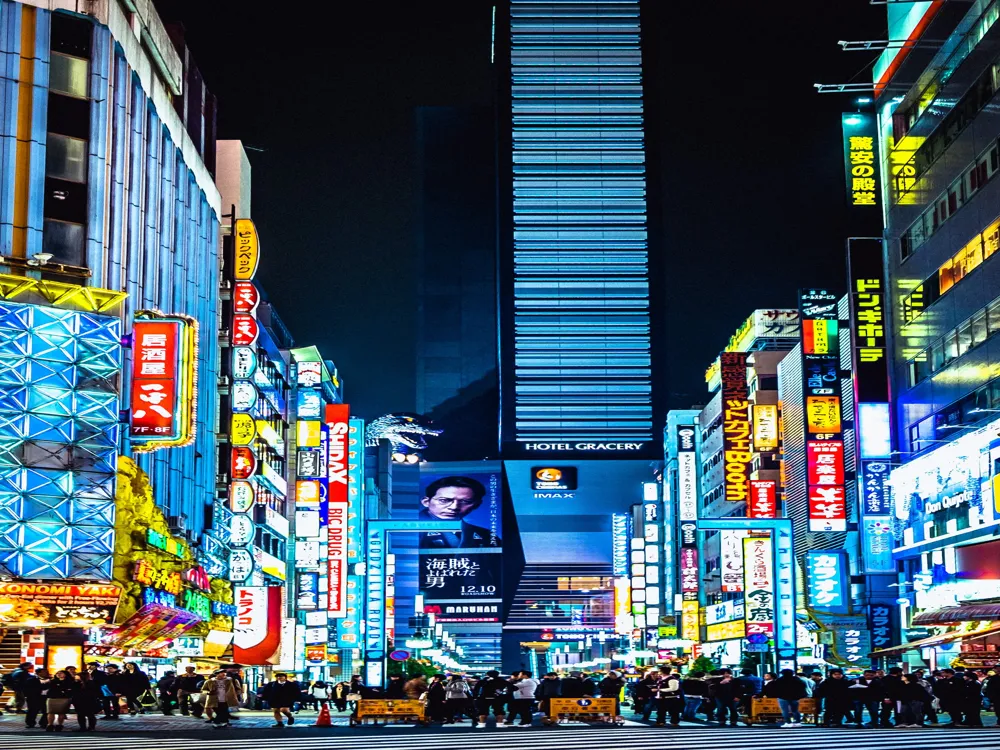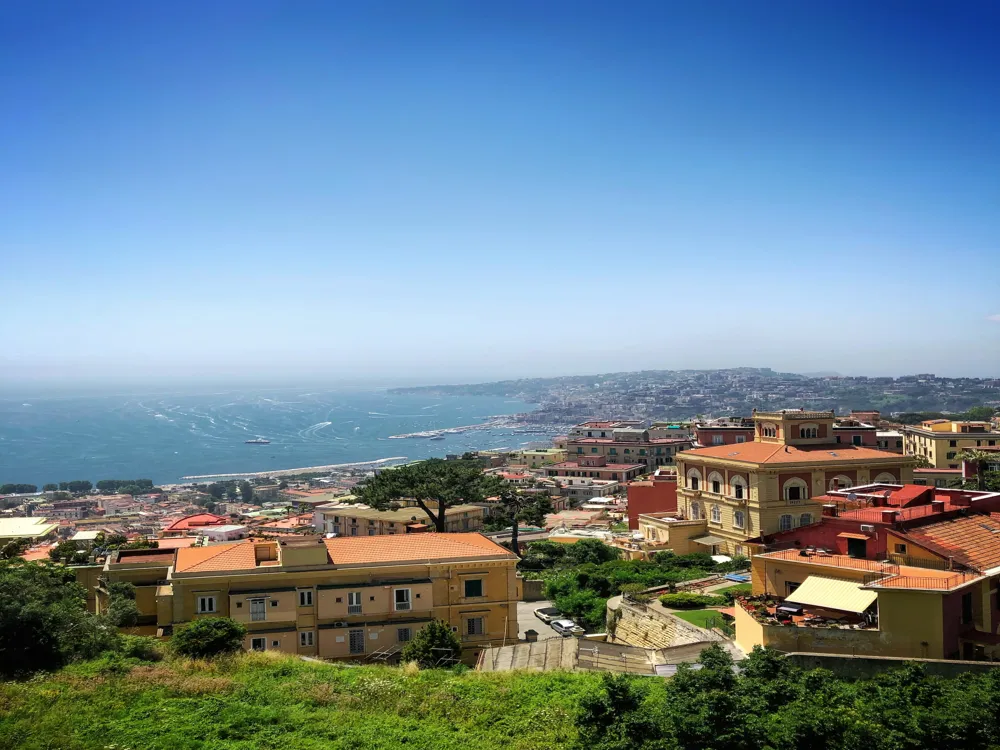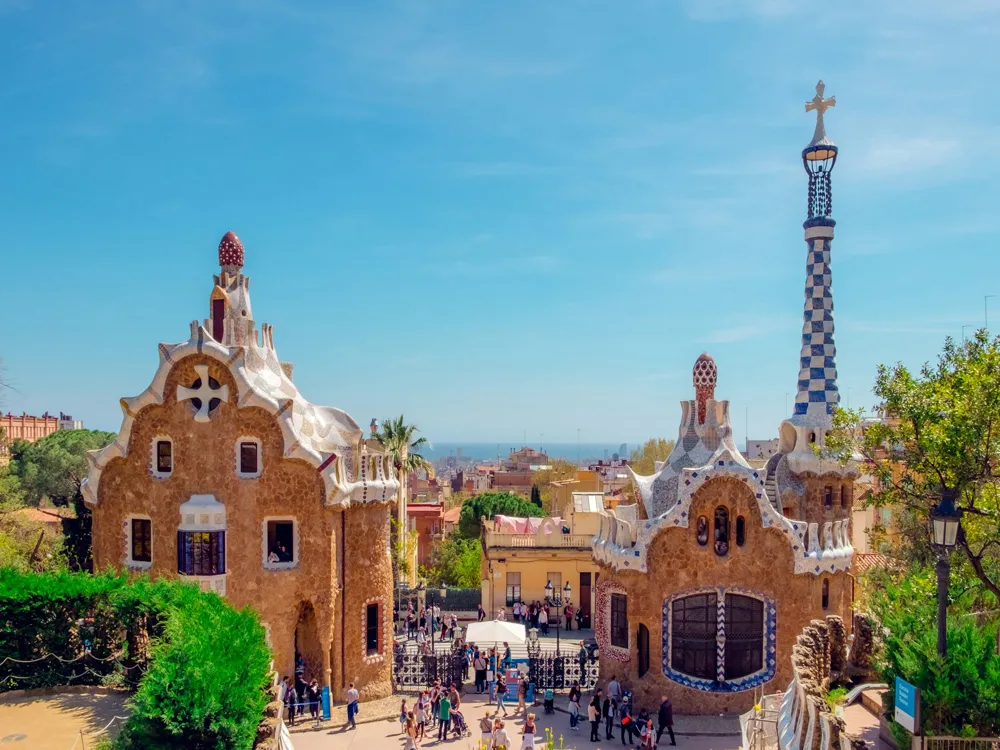Plan Your Travel To Milan
Places To Visit In Milan
I Navigli
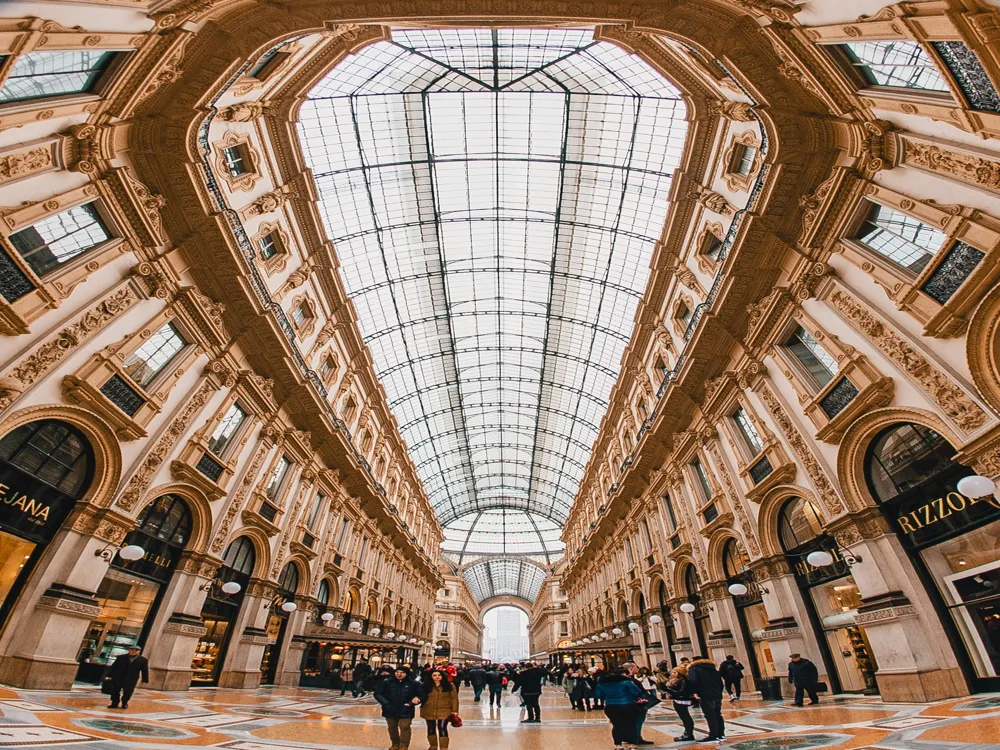
I Navigli is the canal district known for its restaurants, bars and splendid nightlife. This part of Milan is the most active in the evening and at night as the locals flock to the bars after work. You can stroll along the bank of the canal or enjoy a boat trip through the canal, too.
Navigli is the Italian word for canals. Here, you can enjoy a fine aperitivo with locals and order a drink that accompanies a small plate of complimentary food. Milan used to have water transport as its primary form of transport historically and had a complex network of water channels—the Navigli of Milan. This system was the ingenuity of Leonardo da Vinci who devised it near the end of the 15th century. The I Navigli area is what remains of that network. The district comes alive after dusk and looks dazzling as the many lights reflect in the water canal. However, you can also enjoy shopping in the various boutiques and visit art galleries in the morning. In addition, an antique market is organised here on the last Sunday of every month. Lastly, visit the Vicolo dei Lavandai, the washerwomen’s valley—a well-preserved 20th-century laundry room. See the stones worn by being used to scrub clothes with water from the canal. It’s a pretty area offering picturesque sights.
Read More
Isola
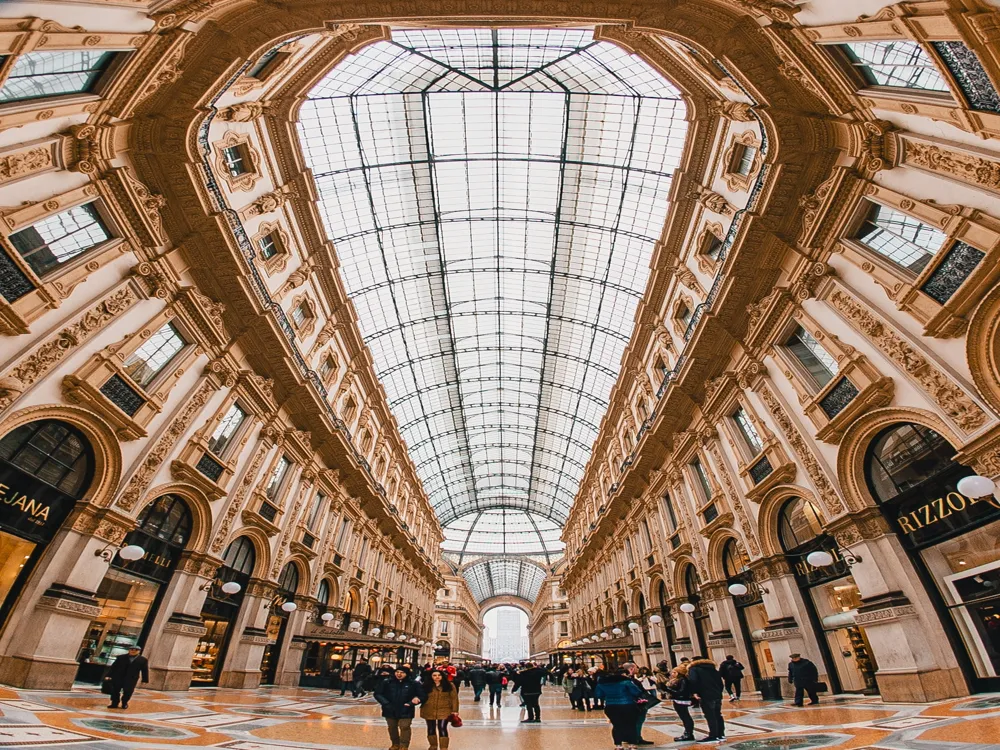
Isola is a neighborhood, a little like an island, as it differs from the rest of the city. It's charm is in the hipster and bohemian vibe that it offers. The entire district is covered in graffiti by some very talented street artists. Biblioteca degli Alberi and church of Santa Maria della Fontana are key highlights.
Isola translates to ‘island’ in Italian; it is also the name of a neighbourhood in Milan. The district is also home to significant Renaissance works displayed in historical sites like the church of Santa Maria della Fontana. Modern gardens like the Biblioteca degli Alberi are also worth visiting.The Biblioteca degli Alberi is Milan’s third-largest park, with a collection of 500 trees and 135,000 plants. The garden is beautifully designed and well maintained. The Bosco Verticale is a modern structure comprising two buildings. Each building flat has a terrace carpeted by trees and shrubs, portraying a gorgeous man-nature crossover. Nearby, the Casa della Memoria is a free-to-visit museum documenting the rise of democracy against fascism. Suppose the street art wasn’t enough for you. In that case, you could enjoy other art forms at the Fabbrica del Vapore, dedicated to music, dance, theatre, etc. Lastly, the cafes of Isola. You can enjoy a delightful cappuccino at Deus Ex Machina, which is a motorcycle store and a coffee shop. 10 Corso Como is part café, part gallery, part boutique, offering excellent coffee, high-end magazines and works of fashion and art.
Read More
Lake Como
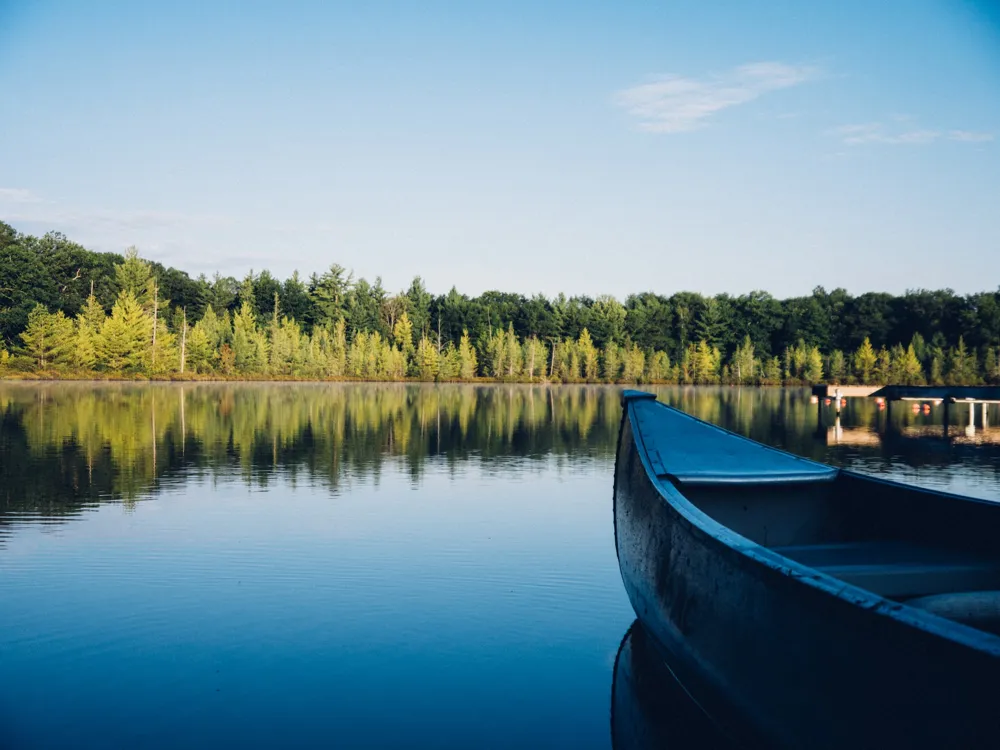
Lake Como is the third-largest and deepest lake in Italy. Probably, the most beautiful lake in the country lies around 34 miles north of Milan, just a short trip away! This wishbone-shaped lake is snuggled in the foothills of the Alps at an elevation of 653 ft.
Visitors flock to Lake Como to explore the colorful lakeside town and enjoy vacations in luxurious villas. The Como town is nestled at the southwestern side of the lake. Though small, this town serves as a splendid transportation hub for those traveling to Lake Como from Milan. Here, you can explore the vibrant streets, and opulent villas, walk through the botanical gardens, shop, and dine at cafes enjoying the lake view. Notably, Milan's railway is one of the most favorable ways to reach Lake Como, which is quick as well as economical. Around 64 direct trains are there from Milan to Como San Giovanni daily. For a day trip to Lake Como, visitors can take the train to Milano Centrale train station, and to get back to Milan, take a return train from either Varenna or Como station.
Read More
Leonardo da Vinci National Museum of Science and Technology

Leonardo da Vinci National Museum of Science and Technology is Italy's largest Science and Technology museum dedicated to Leonardo da Vinci. It is located at San Vittore 21.
San Vittore 21 is a part of an ancient monastery of San Vittore al Corpo. In addition, Leonardo da Vinci National Museum of Science and Technology displays the only moon fragment visible in Italy. Further, it allows visitors to experience life in a submarine by displaying Enrico Toti, a dedicated Italian submarine. Heaven for science enthusiasts, the museum has been catering to curious minds since 1953 with the oldest steam trains, radios, and submarines.
Read More
Milan Archaeology Museum
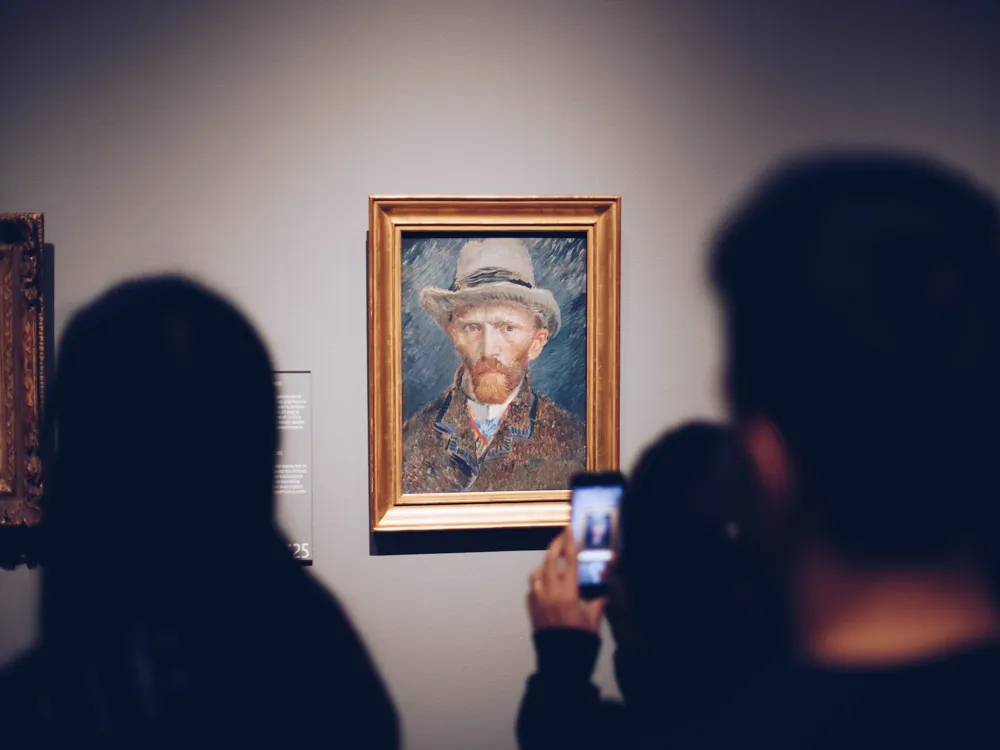
The Milan Archaeology Museum is dedicated to significant archaeological artifacts from several periods. It is situated in Monastero Maggiore’s former convent and the church of San Maurizio. The museum is said to have a “privileged location” as visitors get to look at the remains of the Roman city wall.
It has accurately reconstructed ancient structures like thermal baths, amphitheatres, basilicas, temples and palaces. Recently, the museum was renovated to include Etruscan, Roman, Greek and Medieval antiquities and remains. These were discovered in the 8th and the 9th centuries, respectively. It features the astonishing Coppa Trivulzio, an ancient blown-glass, fretwork-crafted relic. It is possessed by and named after an aristocratic Milanese family—an old Roman tower decorated with frescoes from as long ago as the 4th century BC. The entire building is segregated into different sections documenting different periods and cultures—one of the sections details how life was in ancient Milan. The section is titled “Living in Mediolanum”, Mediolanum being what Milan was previously called.
Read More
Monumental Cemetery
Monumental Cemetery is a beautiful open-air museum cemetery with admirably decorated graves. Not just tombs, the museum also extends its grounds to Italian sculptures, Greek temples, obelisks and even a tiny version of Trajan's Column. Renowned artists or architects decorate some of the tombs.
It might seem otherwise, but visiting the Monumental Cemetery in Milan is not gloomy or macabre.Some strikingly decorated tombs are—a white carved column depicting the life and death of Jesus Christ, a bronze recreation of the "Last Supper", and the tomb of Arturo Toscanini. The cemetery is trifurcated so that the central part hosts the tombs of Catholics, the right part hosts tombs of the Jewish, and the left hosts tombs of the non-Catholics. The sculptures and paintings adorning the cemetery are works of great talents such as Floriano Bodini, Adolfo Wildt, Mario Palanti, Giacomo Manzù, Giò Ponti, Lucio Fontana, and others. It was initially designed to bury prominent citizens; some famous people buried here include the renowned writer Alessandro Manzoni, Milanese painter Francesco Hayez, Herbert Kilpin, founder of football club A.C. Milan, etc.
Read More
Museo Bagatti Valsecchi
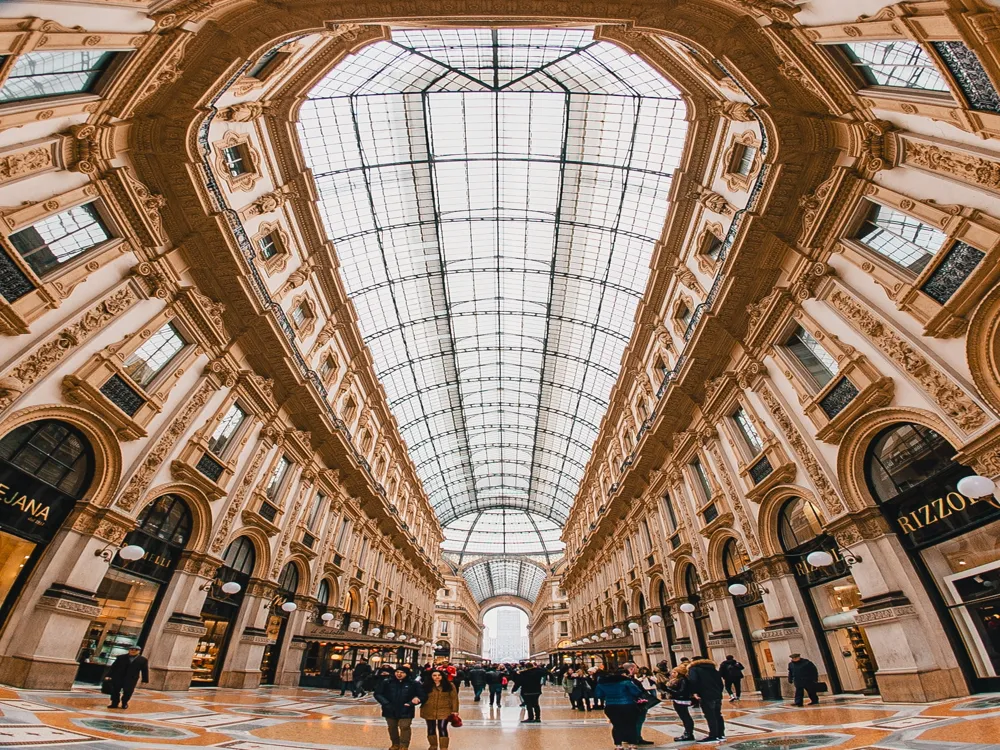
Located in the Montenapoleone district of downtown Milan, Museo Bagatti Valsecchi is a historic art museum that centers around Italian Renaissance Art. This in-house museum displays a variety of paintings, sculptures, armor, clocks and other decorative arts.
Open to the public since 1994, the museum was born out of the extraordinary love for the collection of artifacts of the two brothers: Barons Fausto and Giuseppe Bagatti Valsecchi. They remade their family home in the 19th century with Renaissance art from the 15th and 16th centuries.
Read More
Parco Sempione
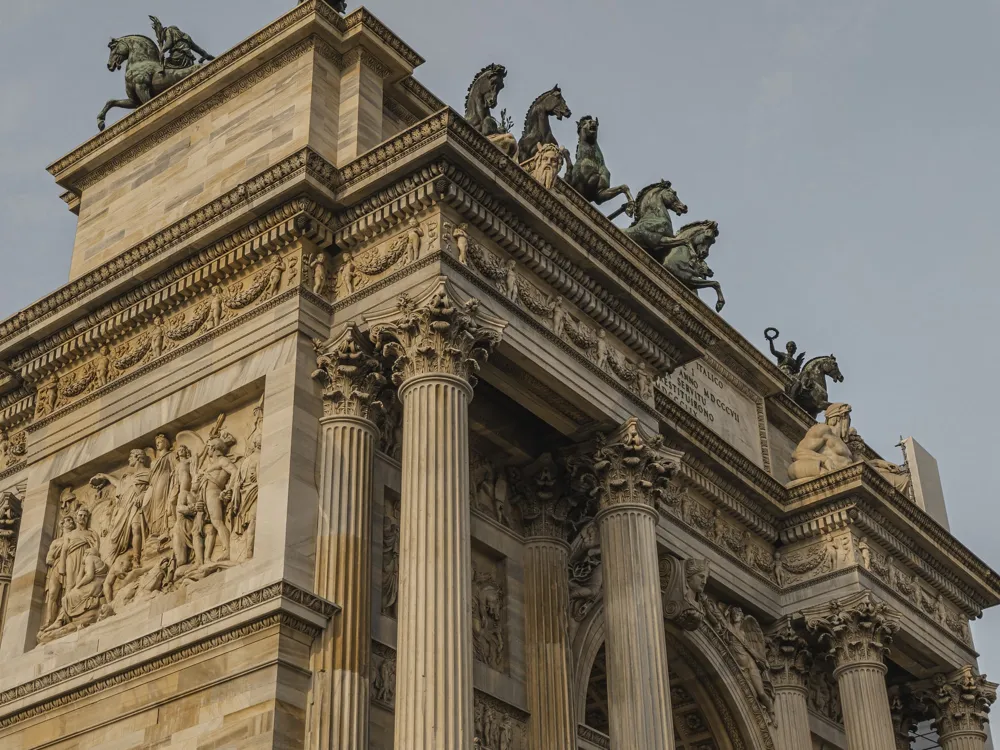
Located in the historic city center, Parco Sempioneis an urban park in Milan adjacent to Sforza Castle's gardens and the Arch of Peace. In the middle of the green lawns lies an artificial lake to add to the scenic beauty of Parco Sempione. The English garden here is the main attraction.
It is spread across 95 acres. This park's architecture was designed so that visitors would enjoy a panoramic view of both the monuments. In addition, this English Garden is home to various trees, bushes, flowers and birds.
Read More
Piazza del Duomo
Piazza del Duomo is Milan's main and biggest piazza(square), whose name is taken from the Milan Cathedral - the Duomo. It is a meeting point for locals and hosts many public events.
This piazza denotes the city's midpoint geographically and is also the city hub from artistic, cultural, and social viewpoints. It is one of the biggest squares in Italy and a perfect place to start a Milan tour. The Piazza del Duomo is the primary square of Milan, the bona fide commercial center of this city for the past seven centuries. Piazza del Duomo is enclosed by the Cathedral of Milan in the east, by the Carminati Palace in the west, by the Vittorio Emanuele II Gallery and Palazzo dei Portici Settentrionali in the north, and by the Royal Palace of Milan, Palazzo dei Portici Meridionali, and Palazzo dell’Arengario in the south. It is the meeting point of the locals to celebrate major events, and this square together with the adjoining Cathedral of Milan (Gothic Cathedral), which is the historic icon of the city, is a popular tourist destination.
Read More
Piazza Mercanti
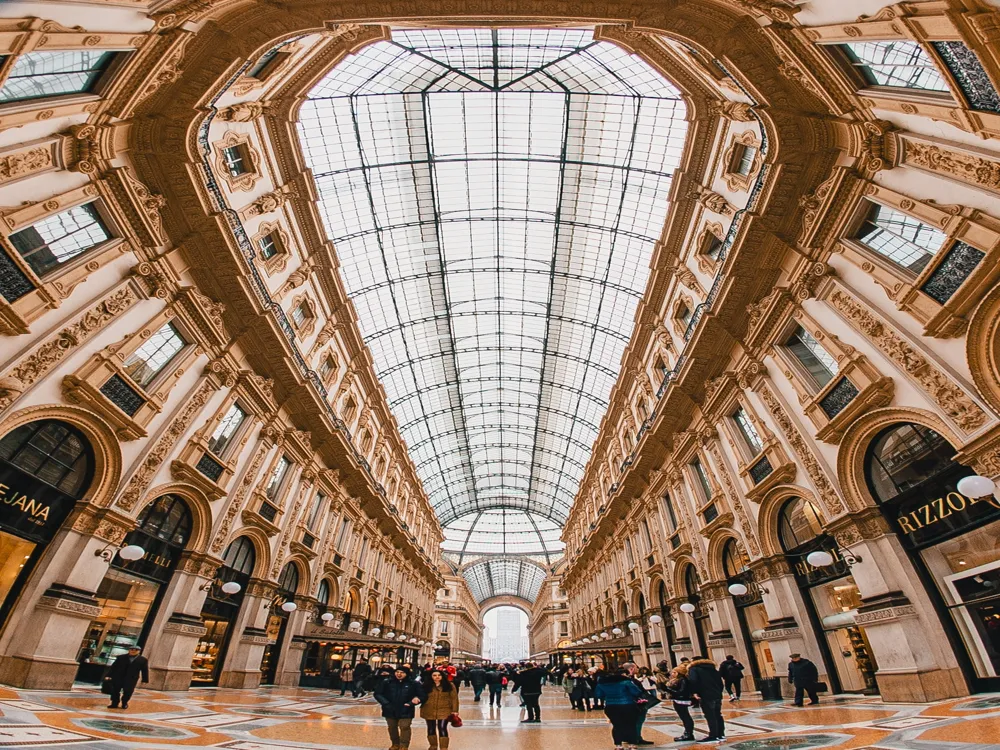
Piazza Mercanti is a central square nestled in Piazza del Duomo. It is a picturesque, pedestrian-only, Medieval area encompassing many unique buildings. It is one of the most beautiful squares in the city, with several historically significant buildings and six entries.
The square encompasses some of the most renowned medieval buildings & attractions on the globe, including Palazzo della Ragione, Palazzo delle Scuole Palatine, Loggia degli Osii, Palazzo dei Giureconsulti, Casa dei Panigarola. Being one of the most beautiful squares in Milan, the Piazza Mercanti is a well-paved and pedestrian-only square that is suitable for wheelchairs. Throughout the Medieval Ages, this square was the commercial and bureaucratic center of the city. Though it does not have the same function.It signifies the Milan city center, and Piazza Cordusio. This piazza used to be the hub of Milan city during the Middle Ages and has retained the authentic Medieval atmosphere till today, owing to the unusual buildings it features. Notably, there used to be six entry points to this square in the 13th century, all related to various trades, from hat makers to blacksmiths.
Read More
Milan Travel Packages
View All Travel Packages Milan
Nearby Places Milan
Browse Package Collections
Browse Hotel Collections









